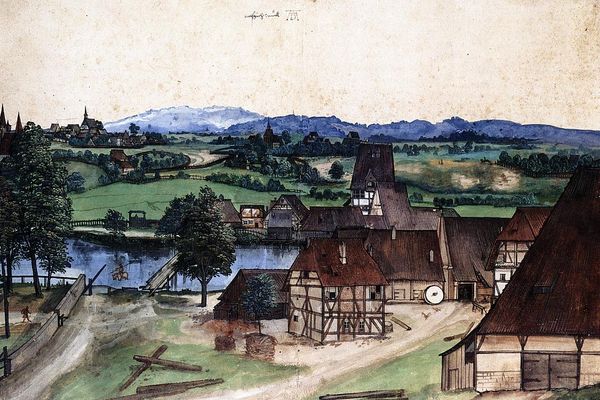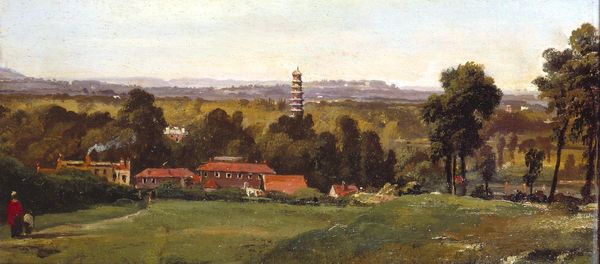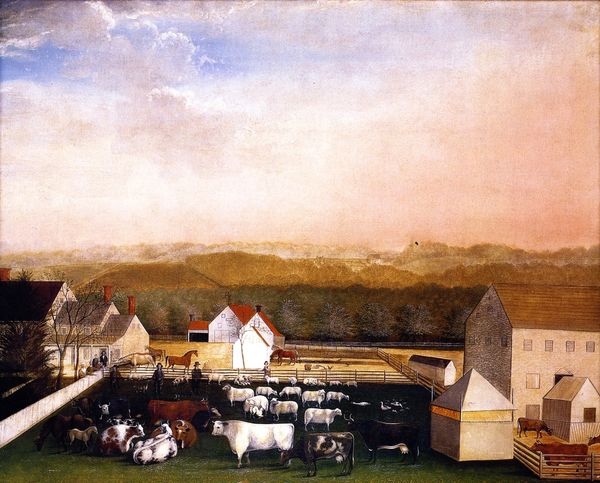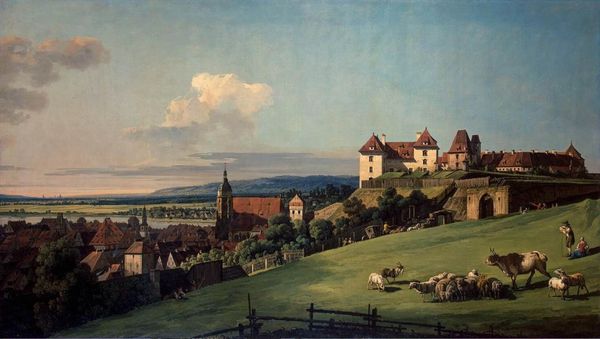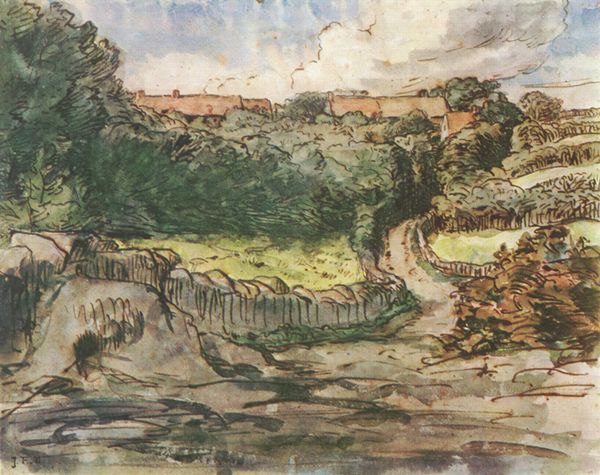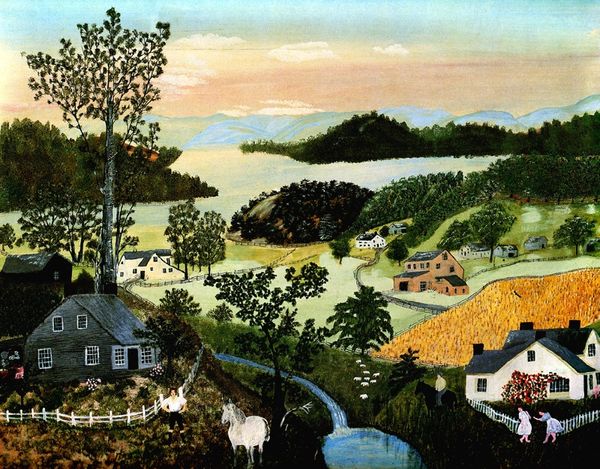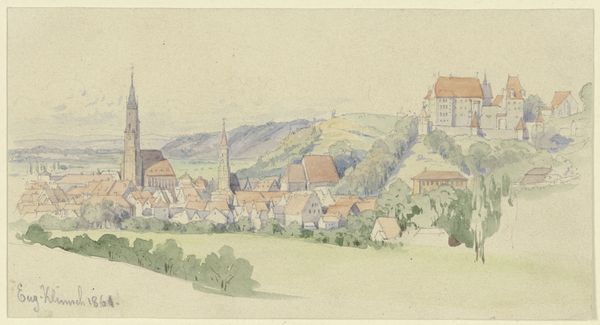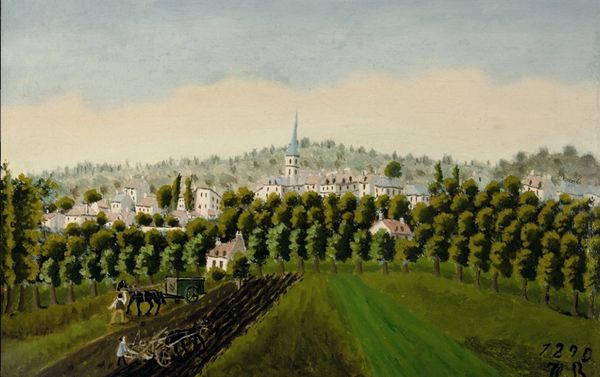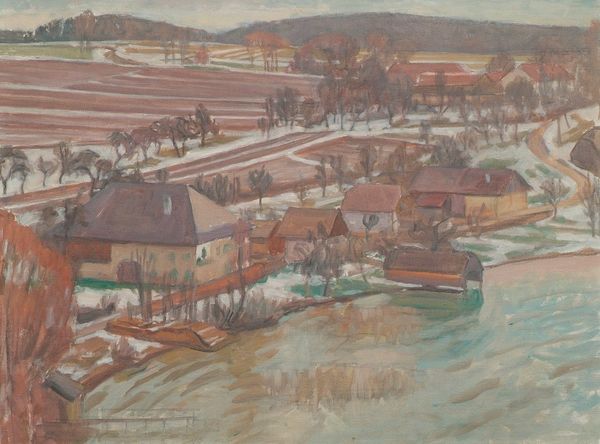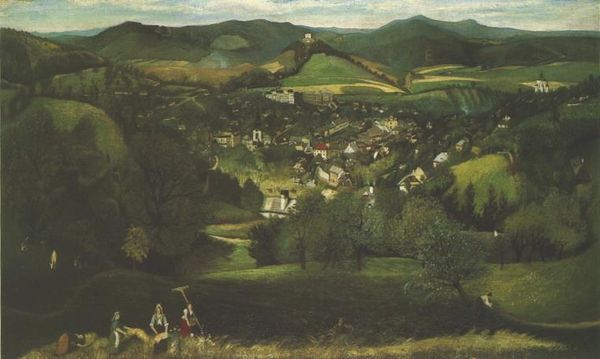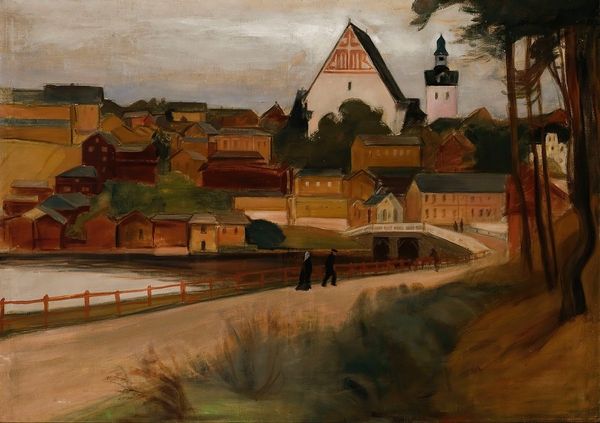
drawing, painting, watercolor
#
drawing
#
medieval
#
painting
#
landscape
#
river
#
oil painting
#
watercolor
#
mountain
#
cityscape
#
watercolour illustration
#
northern-renaissance
#
mixed media
#
miniature
Copyright: Public domain
Curator: Albrecht Durer’s watercolor and ink drawing, “The Trefilería on Peignitz,” painted in 1494, offers a detailed snapshot of the German landscape. It feels almost like a meticulously rendered map. How do you interpret this work in the context of its time? Editor: It's interesting that you describe it as a map. I was struck by the juxtaposition of the almost hyper-realistic buildings with the idyllic, almost fairytale-like setting. How did cityscapes become more important as subjects during the Northern Renaissance? Curator: Precisely! Durer's representation points towards the rise of civic pride and the emerging merchant class. Prior to this, art was primarily commissioned by the church or nobility. But this precise rendering of the Trefilería – the wire-drawing mill – suggests the growing importance of industry and the urban landscape, and pride that cities took in manufacturing. Don't you find it fascinating how it elevates the mundane? Editor: It’s true, seeing the focus shift onto the Trefilería is significant. Does the placement of the church, slightly in the background, have significance? Was Durer making a deliberate social commentary, or just documenting the changing times? Curator: Good observation. The positioning, with the church somewhat subordinate to the cityscape and the manufacturing implied behind it, possibly signals a shift in societal priorities. Perhaps he aimed to subtly acknowledge a transition where religious institutions began sharing influence with the rising economic powers, even within a landscape painting. The emerging urban class begins its ascent, no? Editor: I think I understand better now, thank you! This wasn't just a pretty landscape; it documented socio-economic shifts in Nuremberg, mirroring evolving civic identities. Curator: Exactly. It's a glimpse into the evolving urban landscape, the subtle power dynamics at play, and the beginning of a new visual vocabulary in art, marking how socio-political landscapes impact art's role.
Comments
No comments
Be the first to comment and join the conversation on the ultimate creative platform.
